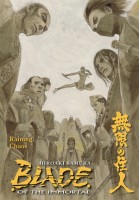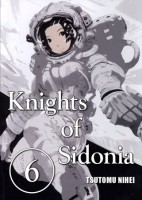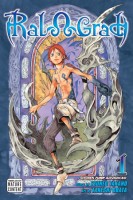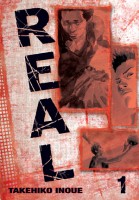 Creator: Hiroaki Samura
Creator: Hiroaki Samura
U.S. publisher: Dark Horse
ISBN: 9781616553210
Released: January 2014
Original release: 2011
Awards: Eisner Award, Japan Media Arts Award
Raining Chaos is the twenty-eighth volume in the English-language edition of Hiroaki Samura’s manga series Blade of the Immortal. Because of slight differences between the Japanese and English publications of the series, Raining Chaos is actually equivalent to the twenty-seventh volume of Blade of the Immortal released in Japan in 2011. The English edition was released by Dark Horse in 2014. Blade of the Immortal is a multi-award-winning series, having earned Samura honors both in Japan and in other countries. The series was one of the first manga that I made a point of following, so I am glad that Dark Horse is seeing Blade of the Immortal through to its end. Raining Chaos is part of the fifth and last major story arc in Blade of the Immortal. With only a few volumes left in the series, Blade of the Immortal is quickly approaching its final climax and Raining Chaos is part of that approach.
The majority of the remaining Ittō-ryū members have steadily been making their way to Hitachi, but it was only a matter of time before those in pursuit would catch up with them. After encountering the Rokki-dan en route, the Ittō-ryū has once again split its members into smaller groups so that some of them may have a better chance of survival. Most stay behind to face the Rokki-dan warriors, hoping to at least delay them if not destroy them, while a smaller force forges ahead attempting to keep the Ittō-ryū’s current second-in-command, Abayama Sōsuke, alive and safe. What they hadn’t counted on was the involvement of the Mugai-ryū, the predecessor of the Rokki-dan. Only two members of that group are still alive, and neither of them are the fighters that they once were, but they are both still extremely skilled and dangerous. With the Ittō-ryū occupied with both the Rokki-dan warriors and the Mugai-ryū assassins, the continued existence of the radical sword school looks increasingly grim.
The Ittō-ryū isn’t so much a specific style of fighting as it is a philosophy. The only agreed upon “rule” is that battles are nominally to be fought one-on-one. Other than that, almost anything goes. In part because of this, the school has attracted a diverse group of fighters with different backgrounds, martial abilities, and motivations. Some, like the Ittō-ryū’s leader Anotsu Kagehisa and several of the other high-ranking members, have very honorable intentions; they fight against what they see as corruption, though their methods may be questionable. Abayama, for example, is very concerned about the welfare of the men who train and serve under him. Others, however, are more interested in their own personal vendettas and selfish desires. They don’t care about others as long as they get what they want. The differences between these two types of people—those with noble and lofty ideals and those who are completely without morals—can be clearly seen in Raining Chaos. Even so, they are all still Ittō-ryū.
In addition to having different goals and reasons for joining the Ittō-ryū, the individual members also have different styles of fighting, which is put to good use in Raining Chaos. There isn’t much plot development in this particular volume of Blade of the Immortal, but there is plenty of action as the confrontation between the remnants of the Ittō-ryū and the Rokki-dan and the Mugai-ryū is largely brought to a conclusion. Happily, the battles in Raining Chaos are quite good; they’re well-choreographed and interesting to watch play out. Samura has a tendency to introduce unusual weapons and techniques in Blade of the Immortal, but even the most fantastic and strange have some basis in reality; legitimate tactics and fighting techniques are still applied to the battles in the series. In Raining Chaos, the importance of range and distancing is particularly emphasized. With excellent fights and compelling characters, Blade of the Immortal continues to be a series that I enjoy. I’m looking forward to the next volume, Beyond Good and Evil, a great deal.






